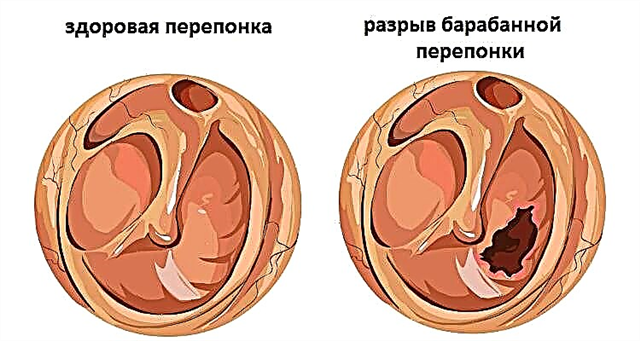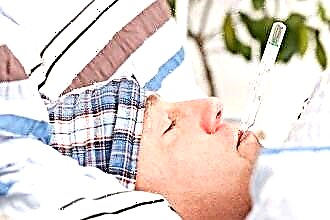Often in the conclusion to the ECG, you can read the following phrase: "diffuse changes in the myocardium." Such words are incomprehensible to people who do not have medical education. Anxiety and fear for health appear. In my practice, I have to deal with similar situations all the time, which is why in today's article I want to analyze this issue in detail.
What is diffuse myocardial change
First, let's talk a little about anatomy. The heart consists of 3 layers, the most voluminous of which is the myocardium, represented by muscle cells - cardiomyocytes. It performs the most important function - contractile.
As a result of the influence of various factors, metabolic changes occur at the cellular level, the conductivity and contractility of myocytes are impaired. These transformations are called diffuse. Diffuse changes in various parts of the heart are not an independent diagnosis: most often they are asymptomatic, but at the same time they serve as a manifestation of many diseases.
Causes
Diffuse changes have many etiological reasons, which can be both intracardiac (pathology in the heart) and extracardial (diseases of other organs).
Intracardiac factors include the following:
- Inflammation of the muscle layer of the heart (myocarditis). It occurs after a viral or bacterial disease (tonsillitis or ARVI). As a rule, it appears 2-3 weeks after recovery.
- Heart damage in autoimmune diseases (scleroderma, rheumatism, systemic lupus erythematosus).
- Cardiac ischemia. In this condition, cardiomyocytes do not receive the required volume of oxygen and nutrients. Dystrophy of muscle cells develops, which are gradually replaced by connective tissue.
Now let's talk about extracardiac causes:
- Arterial hypertension. Hypertrophy (increase in size) of muscle tissue gradually develops, more oxygen is required. However, new vessels of the heart do not grow, and ischemia and myocardial dystrophy occur.
- Various types of anemias. With them, the level of hemoglobin and erythrocytes decreases, and, consequently, the blood supply to the heart decreases.
- Renal or hepatic impairment entails the accumulation of toxic substances in the body, adversely affecting the work of cardiomyocytes.
- Endocrine diseases - diabetes mellitus, hypo- or hyperthyroidism. The course of metabolic processes is disrupted, which leads to dystrophic changes in the myocardium.
- Wrong diet with insufficient intake of vitamins and minerals necessary for the functioning of the whole organism, including for adequate ionic balance in the cells of the heart. Hypovitaminosis can be caused by malabsorption in the intestine, accompanying various gastrointestinal abnormalities (gastritis, pancreatitis, enterocolitis)
- Exposure to toxic substances due to industrial hazards (cobalt, lead, carbon monoxide).
- Long-term use of hormonal drugs, antibiotics ("Azithromycin") and other medicines, alcoholic beverages, drugs. Smoking is an important risk factor.
Moderate diffuse changes in the myocardium are specific for young children. In older people who do not have pathologies from the cardiovascular system, this condition is also an age norm.
Often, diffuse changes are found in individuals who are professionally involved in various sports that require great endurance (for example, running marathon distances).
Clinical manifestations
Subjective (or patient complaints) and objective symptoms of this condition are distinguished. To resolve the issue regarding the norm or pathology, the doctor takes into account all the information obtained when interviewing a person, as well as data from the results of additional studies.
Complaints
In most cases, patients with diffuse myocardial changes do not present complaints. When undergoing a routine medical examination on an electrocardiogram, this condition is detected by chance. At such moments, only dynamic observation by the therapist is required.
With pronounced diffuse changes, when the functioning of cardiomyocytes is significantly impaired, the following symptoms appear:
- fatigue increases;
- unreasonable weakness;
- shortness of breath when walking for a long time or when climbing stairs;
- a feeling of interruptions in the work of the heart;
- chest pain with habitual stress;
- increased nervousness.
In some cases, when interviewing, it is possible to establish a disease, the result of which was the transformation of the myocardium.
Any changes in the myocardium always require dynamic monitoring. In some situations, additional examination and subsequent treatment by a cardiologist may be required.
Objective symptoms
Most often, a diffuse change in the myocardium is detected on an electrocardiogram. Only a specialist can see and correctly interpret the current state.
Changes in the myocardium on the ECG against the background of dystrophic processes are manifested by the following symptoms:
- Rhythm disturbances (the reason is the pathology of the impulse conduction). More often, atrioventricular blockade is recorded, less often - tachyatremia (atrial fibrillation).
- ST segment displacement (depression or elevation). The concavity of this area is extremely rare.
- Inversion and widening of the T wave. Amplitude remains the same.

There are many more methods for establishing diffuse changes, however, the signs listed above are the main ones and are leading in the diagnosis.
If you plunge into practice, then the curve on the ECG always looks individual. Only one of the listed signs can be recorded. But there is still a problem in the heart. Such traits made me make mistakes more than once when studying cardiograms, especially at the beginning of my work activity.
To recognize changes in the myocardium, a method such as ultrasound examination of the heart (Echo-KG) is also used. It shows sclerotic transformation of muscle tissue and contractility disorders. This is a more effective way to detect abnormalities in the heart muscle.
Treatment
There are no methods for eliminating diffuse changes. All methods of treatment are aimed at reducing the influence of risk factors and eliminating the causes.
Non-drug
The first step is to prescribe the correct diet.
The concept assumes the following principles:
- a balanced diet, including proteins, fats, carbohydrates, as well as macro- and microelements, vitamins;
- limiting the use of foods high in preservatives, carbonated and alcoholic beverages, fatty and fried foods.
As for the recommendations specifically for diffuse changes in the myocardium, this is a limitation of the amount of salt consumed to 3 g per day. Sodium chloride retains water. Excess fluid in the body causes "water intoxication". The most extreme degree of edema is the filling of internal cavities with fluid (ascites, hydrothorax, hydropericardium). Against the background of edematous syndrome, heart failure is significantly aggravated.
A large amount of circulating blood creates an additional load on the affected myocardium, increasing the frequency and strength of contractions of the heart muscle, which reduces the rest time for the organ.
Expert advice
I always recommend that my patients include substances rich in potassium in their diet. This trace element is necessary for the correct contraction of the myocardium.
It is found in foods such as:
- dried apricots;
- spinach;
- raisin;
- bananas;
- oranges.
It should not be forgotten that the way of cooking is undoubtedly of great importance. It is better to give preference to steaming food, stewing, boiling. In 90% of cases, my patients promise to follow the diet, however, they violate all recommendations at the first opportunity. Factors like these make lifestyle changes completely ineffective.
Drug therapy
Treatment of diffuse changes in the myocardium depends on the cause that caused this process. One of the most frequent etiological factors is hypertension. Depending on the blood pressure numbers, antihypertensive therapy is prescribed.
It includes such groups of drugs as:
- Angiotensin-converting enzyme inhibitors ("Captopril", "Enap", "Lisinopril") - are the basic drugs of choice. The mechanism of action of this group is the blockade in the body of the synthesis of angiotensin. Under the influence of the substance, peripheral vessels expand, blood flow slows down, and the load on the heart decreases.
- Beta blockers ("Metoprolol", "Atenolol", "Nebivalol", "Bisoprolol", "Carvedilol") - reduce heart rate and myocardial oxygen demand by suppressing sympathetic influences on the heart.
- Diuretics ("Furosemide", "Indapamide", "Veroshpiron", "Torasemide") - reduce the volume of fluid in the body, preventing the development of edema syndrome, which I have already described above.
Remember! The selection of antihypertensive drugs should only be made by a doctor. Self-medication is life-threatening!
In my memory, there are several dozen examples when patients began to take it independently, without taking into account concomitant pathologies and dosage. The result is always disastrous: either hospitalization with acute hypotension, or continued progression of hypertension with the involvement of target organs (kidneys, heart, eyeballs).
Anemia also causes diffuse changes in the heart muscle. In this regard, the need to correct the level of hemoglobin in the blood increases. For this purpose, iron preparations ("Ferritin", "Ferroplex", "Sorbifer") are used.
In addition to the above means, with diffuse myocardial damage, medications are used that improve metabolic processes ("Asparkam", "Riboxin", "Mexidol").
Thus, diffuse changes in the myocardium on the ECG can be both a non-life-threatening pathology and a symptom of various diseases.
An accidental find that does not manifest itself requires only observation. At the same time, variants with a pronounced clinical picture and a pathological ECG curve require treatment. I recommend that all patients over 40 years of age with typical sclerotic changes undergo a complete examination to exclude or establish the correct diagnosis.
Clinical case
Male A., 27 years old. He turned to me with complaints of low-intensity pain in the heart region throughout the day, arising regardless of physical activity.
A more detailed questioning revealed that the young man had had acute respiratory infections 2 weeks ago. He noted an increase in fatigue and general weakness.
On examination, no pathological signs were found.
A comprehensive survey was carried out.
The following methods helped to verify the diagnosis:
- Complete blood count (leukocytosis, increased ESR). The changes make it possible to judge about the bacterial etiology.
- ECG. Diffuse changes in the myocardium, single extrasystoles, 1st degree AV block were noted.
- Echo-KG (systolic dysfunction of the heart muscle, multiple areas of hypokinesia).
The study of these studies allowed me to make a diagnosis: “Infectious myocarditis. Ventricular premature beats. Degree I atriventricular block.
Against the background of the therapy, complete recovery was recorded after 4 weeks. However, diffuse changes in the patient will remain for life and in the future, with the development of pathologies on the part of the cardiovascular system, will aggravate the general condition.



